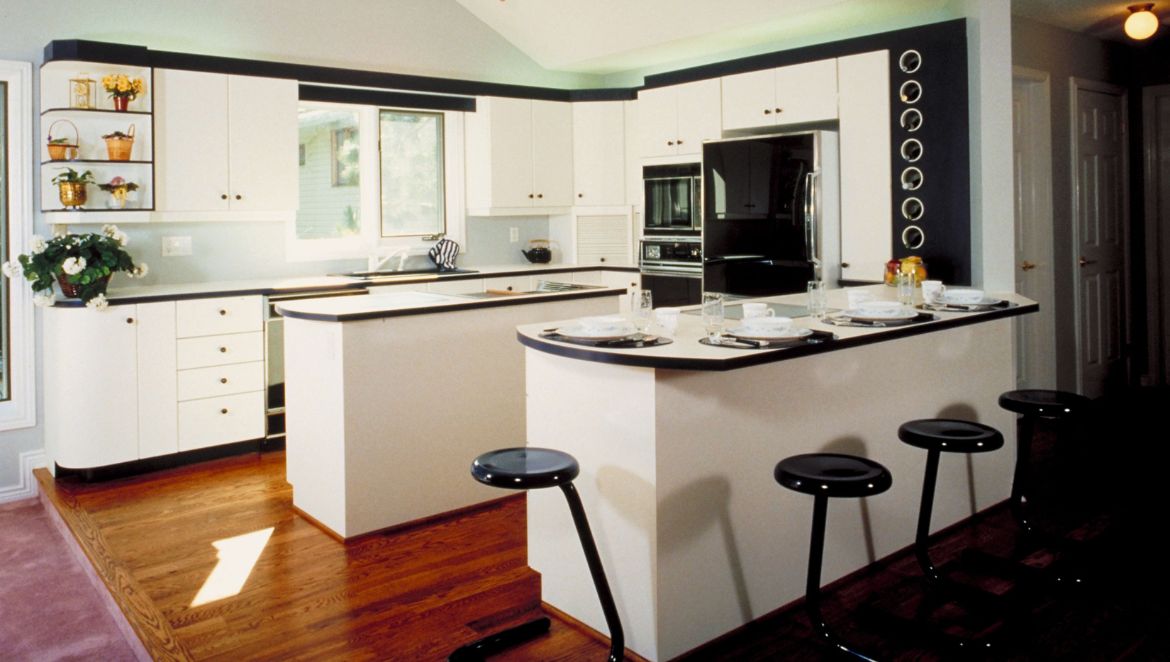
Every kitchen showroom offers a variety of kitchen countertops. The variety of options available will likely surprise you. When it comes to cleaning and maintenance, wood, soapstone, marble, and granite each have their own benefits and drawbacks. Prior to buying, it’s important to understand what you’re getting into.
Your kitchen counter is the centerpiece of the room. It is one of the most frequently touched and heavily used areas in any house. You will probably use your counter even if you are not cooking. That’s usually where you dump your purchases and also keep your belongings for the day. And when you cook, it gets splattered with food, oils, etc., The counter handles far more than you might think.
Every day, you undoubtedly clean it by scooping up bread crumbs, wiping up coffee spills, and rearranging the items on it. But how about a good old-fashioned cleaning? Although cleaning countertops with tough stains may seem difficult, if you use the right tools and techniques, your countertops will be spotless in no time! Understanding how to keep countertops clean and stain-free enhances both the durability and aesthetic appeal of your kitchen as a whole. Here are a few free tips to help you take care of different kitchen countertops.

Granite is a popular countertop material because it is all-natural, durable, and offered in a variety of colors. If maintained properly, it will remain beautiful for a number of years.
Use warm, soapy water to scrub the area thoroughly. Following this, rinse with water. A mild bleach solution can also be used to disinfect. You run the risk of scratching the surface if you use abrasive cleaners or scrub pads.
First, make a paste by combining water and baking soda. Use a soft brush and paste to gently scrub the area. Cover using plastic wrap and leave it overnight. With warm water and a microfiber cloth, thoroughly rinse the surface. Numerous treatments might be necessary to remove stains from granite countertops.
Use the water droplet test to determine when to reseal. Leave a few water puddles on your countertop. If the droplet is still present on the surface after 15 minutes, sealing is not necessary. Use a stone-specific product to prevent stains & facilitate cleaning if the drips spread & end up leaving a black trace on the stone after wiping off the excess.

As homeowners choose kitchen and bathroom design options in an ever-changing world of materials and styles, the wood countertop continues to be a classic. No other tabletop material can match the beautiful appearance and organic feel of wood.
To clean your wooden countertop, mix a mild dish soap solution with water. Give the dish a thorough rinse. Dry with a fresh, soft cloth.
Blot up as much dye as you can to prevent it from penetrating the pores of the wood. Try applying salt to a small stain to see if that helps. After that, wash with the lemon’s cut side. Is the spot still noticeable? Allow it to soak in water for the entire night before washing and drying it with a fresh towel. Use a cotton swab dipped in a solution of mild hydrogen peroxide to brighten a darker stain. If the stain seems to be permanent, you can always sand it down and refinish the wood.
Butcher-block counters and other wooden worktops benefit from oiling because it seals the surface, adds gloss, and keeps the wood from drying out. Mineral oil should be lightly applied to the wood, and any extra should be wiped off after it has had time to absorb. Too much oil will make the surface sticky and attract dirt. You shouldn’t use vegetable or linseed oil.

Unique, heat-resistant, and long-lasting are three qualities of marble countertops that make them stand out. Once sealed, they are stain and crack-resistant, and marble is a natural stone, so it is scratch- and crack-resistant. But since marble is porous, spills need to be cleaned up right away, especially if they involve a dropped cup of tea or coffee.
Clean your marble countertop with a wet, soft cloth or microfiber towel to prevent stains. Dry the surface with a fresh towel. Marble should never be allowed to air dry because it is susceptible to watermarks. For a deeper clean, mix a pH-neutral dishwashing agent with warm water. Rinse thoroughly to get rid of any leftovers, then dry completely.
Wine, soft drinks, tomatoes, orange juice, and other substances can seriously harm your marble; therefore, blot them immediately. The majority of stains on marble countertops can be eliminated using a poultice, a potent paste that absorbs the stain from the surface. Deep-seated stains might call for a specialist’s help.
These surfaces are well-known for their rock-solid durability, but to keep them stain-free, they must be frequently resealed. use a product created especially for the porous surface of the marble.

Stainless steel countertops are sophisticated and modern. They are sturdy and nonporous, which makes them perfect for use in the food industry. However, they might get scratched, so non-abrasive cleaning is needed.
Your stainless-steel countertop can be dry-cleaned by wiping it down with a microfiber towel. For wet cleaning, use a soft cloth dipped in a solution of warm water and mild dishwashing detergent. Rinse the area with fresh water, then pat it dry with a soft, clean cloth. In order to clean fingerprints and smudges off stainless steel, opt for industrial cleaners.
The stainless-steel countertop’s ability to resist stains is one of its benefits. Stainless steel, despite its name, can still develop unsightly stains. Using a soft cloth and a paste made of dish soap and baking soda, rub the mixture in the stain’s direction.
Your stainless-steel countertops don’t need to be sealed, but you might want to give them a quick polish now and then with some microfiber cloth and stainless-steel polish or lemon oil.

Ceramic tile is a good, mid-range option for contemporary worktop solutions. It is extremely durable, accessible in a variety of colors and sizes, and reasonably priced when purchased in bulk. If all you want to do is create your own countertops, it’s also fantastic for DIY projects.
If the tiles aren’t cleaned thoroughly, soap may leave a coating on them. White vinegar can be used in place of other cleaning agents when cleaning tile countertops. To avoid harming the countertop, avoid using harsh cleaners and abrasive pads.
While tile does not easily degrade in color, grout (a mortar or paste for filling the gaps between wall or floor tiles.) might. The likelihood of finding germs is also highest there. With a toothbrush and a weak bleach solution, clean the grout. Utilize a professional grout sealer to seal it after that.
A glaze on ceramic tile eliminates the need for sealing. But a stain-resistant grout sealer needs to be applied to the grout. Unglazed tile counters need to be sealed with a penetrating sealer to maintain their appearance and resist stains.

© Veneta Cucine 2024
WhatsApp us